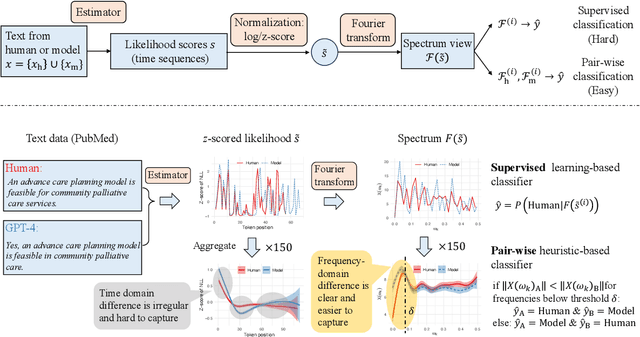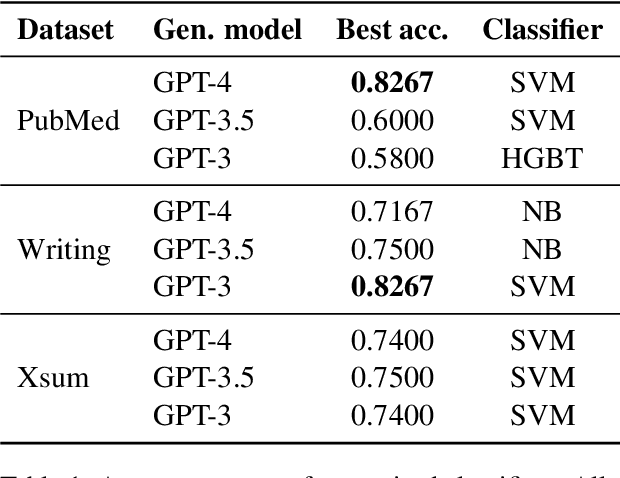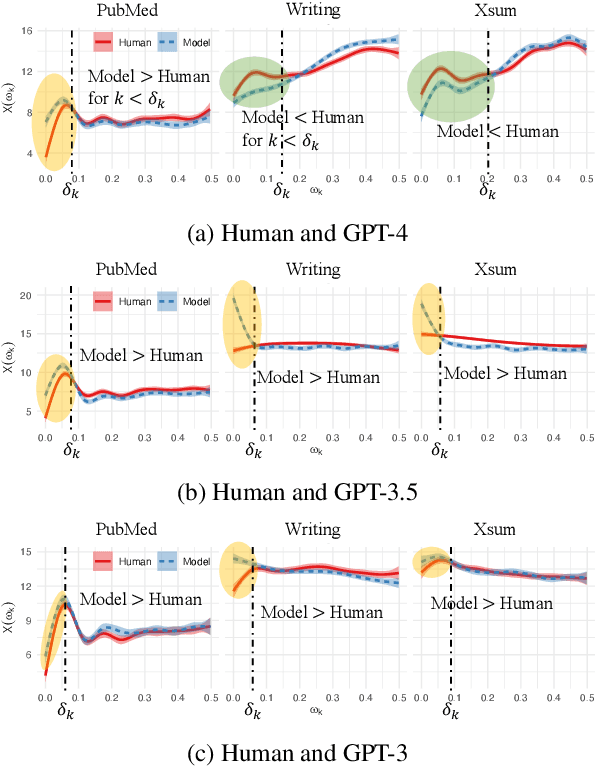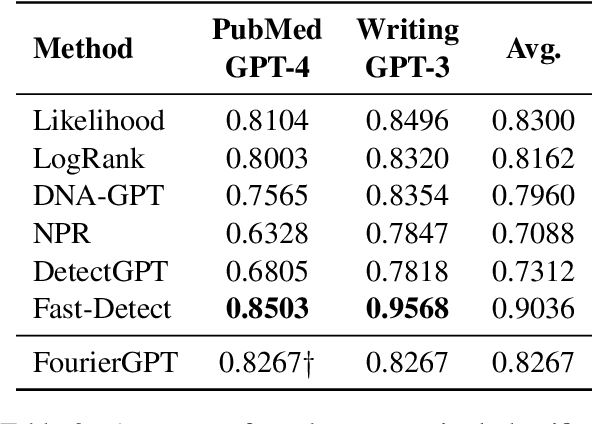Hao An
Detecting Subtle Differences between Human and Model Languages Using Spectrum of Relative Likelihood
Jun 28, 2024



Abstract:Human and model-generated texts can be distinguished by examining the magnitude of likelihood in language. However, it is becoming increasingly difficult as language model's capabilities of generating human-like texts keep evolving. This study provides a new perspective by using the relative likelihood values instead of absolute ones, and extracting useful features from the spectrum-view of likelihood for the human-model text detection task. We propose a detection procedure with two classification methods, supervised and heuristic-based, respectively, which results in competitive performances with previous zero-shot detection methods and a new state-of-the-art on short-text detection. Our method can also reveal subtle differences between human and model languages, which find theoretical roots in psycholinguistics studies. Our code is available at https://github.com/CLCS-SUSTech/FourierGPT
TLAG: An Informative Trigger and Label-Aware Knowledge Guided Model for Dialogue-based Relation Extraction
Mar 30, 2023Abstract:Dialogue-based Relation Extraction (DRE) aims to predict the relation type of argument pairs that are mentioned in dialogue. The latest trigger-enhanced methods propose trigger prediction tasks to promote DRE. However, these methods are not able to fully leverage the trigger information and even bring noise to relation extraction. To solve these problems, we propose TLAG, which fully leverages the trigger and label-aware knowledge to guide the relation extraction. First, we design an adaptive trigger fusion module to fully leverage the trigger information. Then, we introduce label-aware knowledge to further promote our model's performance. Experimental results on the DialogRE dataset show that our TLAG outperforms the baseline models, and detailed analyses demonstrate the effectiveness of our approach.
Impact Mitigation for Dynamic Legged Robots with Steel Wire Transmission Using Nonlinear Active Compliance Control
Aug 03, 2021



Abstract:Impact mitigation is crucial to the stable locomotion of legged robots, especially in high-speed dynamic locomotion. This paper presents a leg locomotion system including the nonlinear active compliance control and the active impedance control for the steel wire transmission-based legged robot. The developed control system enables high-speed dynamic locomotion with excellent impact mitigation and leg position tracking performance, where three strategies are applied. a) The feed-forward controller is designed according to the linear motor-leg model with the information of Coulomb friction and viscous friction. b) Steel wire transmission model-based compensation guarantees ideal virtual spring compliance characteristics. c) Nonlinear active compliance control and active impedance control ensure better impact mitigation performance than linear scheme and guarantee position tracking performance. The proposed control system is verified on a real robot named SCIT Dog and the experiment demonstrates the ideal impact mitigation ability in high-speed dynamic locomotion without any passive spring mechanism.
 Add to Chrome
Add to Chrome Add to Firefox
Add to Firefox Add to Edge
Add to Edge